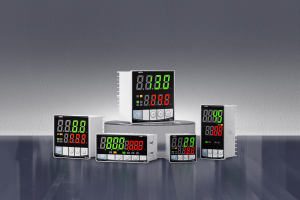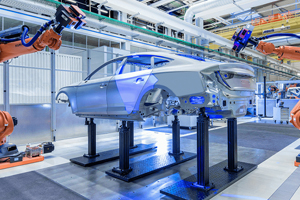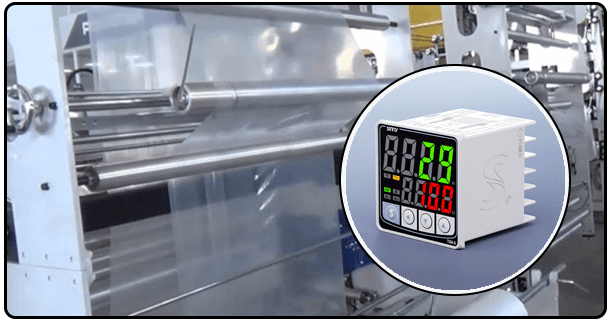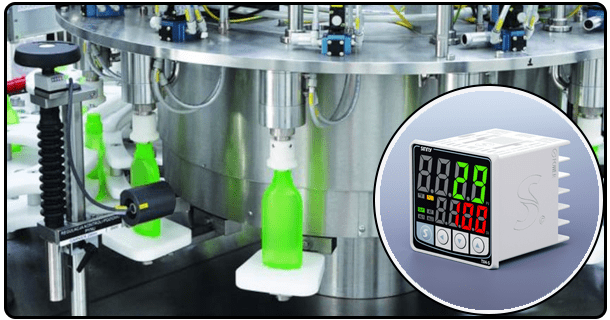Principles of PID temperature controller design: Implementation and tuning
Meta Description (Learn how to create a PID Temperature Controller. This guide will cover system requirements, the selection of hardware (sensors and controllers), implementation software, PID tuning, as well as other topics. )
I. Introduction to PID temperature control
II. The PID Algorithm: Understanding it
The PID control system is based on a feedback loop. This concept has been used in the field of control systems engineering for many years. The loop involves measuring a process variable (in this case temperature), comparing the value to the desired setpoint and calculating error. This error is then used to change the input to the system (e.g. the power of a heating component) in order to reduce the error. PID enhances the basic loop, incorporating different control actions that each address different aspects of error signals. The proportional term (P) generates a signal directly proportional the magnitude of the instantaneous error signal. This is defined as the temperature difference between setpoint and measured temperature. A larger error will result in a greater output signal. Its primary purpose is to correct the variable and move it closer to its setpoint. However, the sole reliance on proportional controls can lead to a steady state error. The final temperature might not exactly align with the setpoint because of system delays and unchanging conditions.
Integral gain (Ki) is the integral term that corrects this error. Integral gain (Ki), a measure of the speed at which the controller can correct this error, determines whether or not it is corrected. The integral term is used to calculate the total cumulative error. The integral term will increase (or decrease) the output signal if the error continues. This increases the influence of the actuator, pushing the process variable closer to the setpoint. The system will reach the setpoint temperature if the actuator is able to handle any opposition. Integral gain (Ki), which is the amount of time the controller reacts to error, determines the strength with which it responds. A higher Ki will result in an earlier elimination of the steady-state errors while a smaller Ki will lead to a slower response.
The derivative (D) is a term that provides corrective actions based on how fast the error changes. The derivative term anticipates deviations in the future by looking at how quickly an error increases or decreases. The derivative output term will generate a large corrective signal if the error rapidly increases or decreases. This helps to reduce oscillations and improve stability. It is especially beneficial to systems that are prone overshoot or unstable due to rapid changes and noise.
This three-step process allows for highly accurate temperature control. The controller can react to current errors in a timely manner, anticipate errors and learn from previous errors. This algorithmic basis is essential for understanding the capabilities of PID temperature control systems and their proper implementation in different applications.
III. The Project Specification and Requirements
It is important to define clearly the objective of the project and its performance requirements before designing a PID controller. The first step is to define the goal of the controller. The primary purpose of the controller is to be defined. For example, it could be maintaining a temperature constant within a range or controlling temperature changes according to a setpoint or profile. This objective will directly influence the requirements of the controller. The setting of performance metrics, which translates control goals into quantifiable objectives is also crucial. The metrics are used to define desired system characteristics. The accuracy of the system is the primary concern. This refers to desired temperature tolerances or maximum deviations from setpoints. A system may require +-0.5degC tolerance. The response time determines how fast the system will reach its setpoint following a change. It could be the time it takes to achieve the setpoint within the tolerance specified after the change. Another key metric is stability, which refers to the controller’s ability to keep the setpoint while displaying no excessive oscillations. The damping is the response of the system. The system’s capability to keep the setpoint in spite of external disturbances such as fluctuations in load or changes in temperature is called disruption rejection. It is especially important for industrial environments where the conditions are often unpredictable. PID controllers must be able to meet the required performance envelope, which is defined by the accuracy, response times, stability and disturbance rejection.
The hardware requirements for the construction of the system are tangible. For example, the typical PID controller for temperature requires: a sensor that measures the process variable; a controller to calculate the PID equations; an actuator which changes the temperature and power supplies to supply the electrical energy. These components should be selected according to the performance metrics defined and the overall project context. A high-precision, accurate sensor is needed for some applications. It is important that the controller has enough processing power to communicate with both sensor and actuator. Power handling capability of the actuator must match the output power and application. Budget restrictions are also a crucial factor to consider during the requirement phase. Cost of components, time required for development, and future maintenance must be weighed against performance requirements and application needs.
The controller unit, as well as the development environment are specified by software requirements This offers greater flexibility and features. Development environments are determined by the controller. In the case of microcontrollers, Integrated Development Environments like Arduino IDE and PlatformIO are often used. Software packages are required for PLCs. Software must include the PID algorithm and implement sensor readings, actuator controls, as well as a possible user interface. There are development libraries and tools available for different platforms. These requirements provide a strong foundation for design, and ensure that the system is possible within given constraints.
Actuator is the part that receives an output command and converts it to a physical act that 5.changes the temperature of the process. The most common temperature controller actuator is the heating element. This can be a resistive heating wire, heating film or cartridge heater. It generates heat by passing an electric current through it. A heating element is selected based on various factors, such as the power required, temperature range and type of heat transfer. Peltier modules that can be used to heat or cool depending upon the direction of current flow, or fans which increase heat dissipation may be selected if cooling is needed. It is important to match the actuator's ability to handle power with the output of the controller, the power supply as well as the required power. References. (Links to component datasheets and application notes, for example: link to site with examples of heating elements).
Power supply is required to safely and efficiently power sensor, controller and actuator. Power supply should provide correct voltage (5V, 12V or 24V), and enough current, to satisfy the power requirements of all components. References Link to site about selecting power supplies in electronics. The power supply should provide enough current and the right voltage (5V, 12V or 24V), to satisfy the power requirements of the connected components. Refers:
- How to pid temperature controller
- PID Temperature Controller UK: Understanding and Implementing Proportional-Integral-Derivative Control























